Financial industry advancements will radically disrupt how customers engage with banks, with mobile banking apps at the forefront. From checking balances on an account to making transfers or loans, mobile banking apps have quickly become indispensable tools for billions around the globe.
However, creating an effective mobile banking application is complex and requires extensive planning, execution and constant improvement. This guide offers a thorough overview of each stage in developing an effective app, from initial concept through implementation - key focus areas being understanding customer requirements; selecting appropriate features; assuring adequate security features and selecting cost-efficient development techniques.
One key factor for success in this field is working with mobile banking application development firms that possess both experience and expertise necessary to navigate the complexities of the banking sector. Not only are they technical specialists; these firms should also understand compliance regulations, user experience design considerations and emerging technologies such as AI or blockchain.
Let us dive right into the blog, but first let us understand the basics: what is a banking app?
Defining Banking Apps
Mobile banking is a web-based service that banks offer to existing customers who access their bank accounts to carry out a wide range of transactions on mobile devices, including tablets and smartphones, whenever they are connected via the Internet.
It is possible to manage your money anytime with the mobile banking app. It's simple and efficient compared to banking at a bank using a computer. Also, there is no cost for the use of the service. However, there are problems with connectivity and technical issues, and the users are required to follow security rules.
Market Analysis of Mobile Banking
The latest developments regarding mobile banking, essential data, market research, and the audience's expectations offer a thorough study of the market for mobile banking.
Current Trends in Mobile Banking
-
Rise of Digital-Only Banks
Digital-only banks, also called neo-banks, have emerged as significant actors in the financial services field. They are solely online and do not have physical branch locations, and they provide easy and convenient mobile banking. Some examples of these are Revolut, N26, and Chime. They are popular among tech-savvy customers because they offer features like live notifications, instant transactions, and user-friendly interfaces.
-
Biometric Authentication
Security remains the top priority for those who use mobile banking. Methods for biometric authentication, such as face recognition, fingerprint scans, and voice recognition, are gaining popularity due to their capability to improve security and provide an enjoyable user experience. These methods reduce the possibility of fraud and unauthorized access and ensure the user's private financial data is secure.
-
Integration of Artificial Intelligence (AI) and Machine Learning (ML)
AI and ML transform mobile banking by providing customized experiences and predictive analytics. Virtual assistants and AI-powered chatbots provide 24/7 customer support, assist with inquiries, and guide customers through different banking procedures. In addition, ML algorithms analyze user habits to provide individual financial assistance, spot fraud, and improve transaction processing.
-
Expansion of Mobile Payment Services
Pay-by-phone services, including Apple Pay, Google Pay, and Samsung Pay, are becoming increasingly sought-after. The services let users use secure payment methods on their phones, negating the need to carry cash or physical cards. The security and convenience of mobile payment have led to increasing use by consumers and businesses, who are equally embracing the fashion.
-
Improved Customer Engagement via personalization
Mobile banking apps leverage data analytics to provide user-specific experiences. By analyzing transaction history, spending patterns, and financial objectives, banks can offer customized products, spending recommendations, and budget management tools. Customized customer experiences increase satisfaction and loyalty, resulting in long-term relationships with the institution.
Key Statistics and Market Insights
-
Growing Adoption of Mobile Banking
Mobile banking's popularity is growing rapidly across the globe. According to research from Statista, the number of mobile banking users is projected to rise to 2.5 billion in 2024, an increase from 1.8 billion as of 2020. This increase is fueled by the increasing use of smartphones, enhanced connectivity to the internet, and the ease of using the mobile banking service.
-
Increased Transaction Volume
Mobile banking has drastically increased the volume of transactions. The Global Mobile Banking Report by Business Insider Intelligence revealed that mobile banking transactions comprised 52% of all electronic banking transactions by 2020. The trend will likely be sustained as more customers rely on mobile banking apps to fulfill their requirements.
-
High User Satisfaction
Customers are delighted with mobile banking apps. A study carried out by J.D. Power in 2021 revealed that 82 percent of users who used mobile banking were content with their experience using the app. The main factors contributing to this satisfaction include the ease of use, security options, and access to different banking options through the application.
-
Market Penetration in Developing Regions
Although mobile banking is popular in the developed world, it quickly expands in emerging regions. In areas with little access to traditional banking infrastructures, the mobile bank is an effective solution for financial access. In the sub-Saharan African region, mobile banking options such as M-Pesa changed the world of financial services, allowing many unbanked people to access banking services.
-
Revenue Growth for Banks
Mobile banking has emerged as an important source of revenue for banks. An analysis by Juniper Research estimated that mobile banking services accounted for $1.2 trillion in revenues worldwide for banks in 2020. The revenue will increase to $2.4 trillion by 2024 due to increased user adoption, higher transaction volumes, and the launch of brand-new services for mobile banking.
Target Audience and User Expectations
-
Tech-Savvy Millennials and Gen Z
Gen X and Millennials Gen Z are the primary customers of mobile banking services. Tech-savvy generations appreciate efficiency, speed, and digital experience. Apps for mobile banking that have user-friendly interfaces, immediate notifications, seamless transactions, and instant notifications resonate very well with this group of people. Furthermore, users want personal experiences as well as innovative options that are tailored to the specific needs of their financial situation.
-
Security-Conscious Users
Security is a priority for mobile banking users. There are growing concerns about cybersecurity threats and data breaches, and customers expect strong security from their mobile banking applications. Two-factor authentication using biometrics, biometric encryption, and encryption are crucial options that boost confidence and trust when using mobile banking.
-
Financially Inclusive Users
Mobile banking is vital in encouraging access to financial services, specifically in areas with little access to traditional banking services. The regions of development, which include rural areas, depend on mobile banking for access to essential services like money transfers, bill payments, or savings accounts. Banking apps for mobile that are tailored to the requirements of users in these areas and give specific solutions for local areas are highly sought-after.
-
Small Business Owners
Small-scale business owners are increasingly opting for mobile banking to fulfill their needs in managing finances. Banking apps for mobile that offer options like expense tracking invoices and accounts management appeal to this particular group of customers. They seek seamless integration with banking tools and services that help improve their business processes.
-
Elderly and Less Tech-savvy Users
Although younger people dominate the base of mobile banking users, there's an increase in demand from older people and those with less technical skills. They want user-friendly interfaces, simple navigation, and fast and responsive customer service for a better bank experience on mobile devices. Mobile banking applications that emphasize the simplicity of use and education resources to this group can attract a larger market.
Key Features of a Mobile Banking App
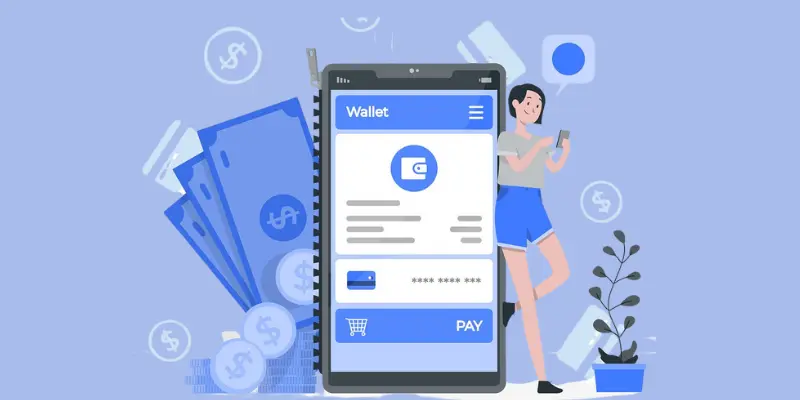
The modern mobile banking app comprises the most essential, sophisticated, and safe attributes.
Account Management
A fundamental feature of any mobile banking application is that it can give customers a summary of their accounts. This can include savings, checking accounts, credit cards, and loans. Customers should be able to check their balances, recent transactions, and other relevant information at a glance.
Users need access to an easily accessible history of transactions. The feature will let them view the history, filter, and search for past transactions, giving insight into their spending habits and assisting them in managing their finances more effectively.
It is vital to transfer money between accounts, whether within the same institution or externally. This includes the option of one-time transfers, scheduled transfers, and recurring transfers. The process must be smooth, secure, and quick.
Transactions
Mobile banking applications will be able to accept bill payments for various services, such as utility bills, credit cards, and loans. It should offer options to make one-time or recurring transactions, making it simple for customers to pay their bills quickly.
One of the most valuable characteristics of today's mobile banking applications is checking checks via mobile. Customers can make deposits by taking a picture of the check inside the application. This convenience saves time, removing the need to go to an actual branch.
This feature has become vital with the rise of peer-to-peer payments. Users should be able to pay and receive money from their friends and relatives quickly and easily. Integrating with services such as Zelle, Venmo, or PayPal improves the functionality of this feature.
Balance Checks
The users expect instant updates on their balances. This function ensures that they know the funds available throughout the day, which helps them make informed financial choices.
Mobile banking apps must include spending alerts to help customers track their financial situation. They can notify customers when their balance is under a specific limit, when significant transactions are made, or when they are due for a bill.
The app includes basic budgeting tools to help users manage their finances more efficiently. The tools can categorize expenditures, keep track of spending in relation to budgets, and offer insights about where funds are used.
AI-Driven Insights
Mobile banking apps can leverage artificial intelligence applications to give personalized advice on financial matters based on the user's budgets, income, and financial goals. These apps can offer tips for savings, investing, or reducing debt.
Predictive analytics are a great way to help users anticipate expenses in the future and monitor their financial situation more effectively. The app, for instance, could predict future bills or identify patterns in expenditure that could result in the need for overdrafts.
AI automatically categorizes expenditures, making it much easier for users to determine where they spend their money. This tool can offer specific insights into users' spending habits and help them identify areas where they could make savings.
Personalized Offers
Based on users' spending habits and preferences, this app can provide personalized discounts, deals, and cashback. This is not only beneficial to the customer but also improves their experience using the application.
Integration with loyalty programs lets users manage and redeem rewards right via the application. The feature covers all aspects of airline miles, from points for retail purchases to ensuring the user has seamless service.
The app can recommend financial products like credit cards, loans, or investment options tailored to the individual's needs and financial goals. This personalized approach will increase customer satisfaction and generate additional revenues for banks.
Enhanced User Experience
Voice-activated features allow users to complete banking tasks using spoken commands. They can check accounts, make transfers, and even make payments. Voice banking is a unidirectional, easy experience.
AI-powered chatbots and virtual assistants can perform various customer service tasks, such as answering basic questions or helping users navigate complicated transactions. This ensures that users receive prompt help without the need to contact Customer Service.
AR offers users a more engaging and interactive experience. For example, customers can utilize AR to locate ATMs or branches or display their expenditure data more clearly.
Biometric Authentication
The scanning of fingerprints has become a popular security function that adds additional security. This ensures that only the account owner can access the app, significantly reducing the chance of someone else accessing the app.
The technology of facial recognition adds a layer of security. Verifying a user's identity using facial Recognition ensures that the user who has access to the account is the account owner.
Voice recognition can also be utilized as a biometric authentication technique. The feature analyses the distinct features of the voice to confirm an individual's identity. It is an easy and secure method of using the app.
Encryption
Mobile banking applications require end-to-end encryption to protect sensitive personal information. This guarantees that all information transferred between the app and the bank's servers is encrypted, making it virtually impossible for hackers to steal and decode the information.
SSL certificates provide another layer of protection by encrypting the connection between the user's device and the bank's server. They help safeguard against data theft and assure the privacy of information provided by users.
Data masking methods conceal confidential information from unsuspecting users. For example, displaying just the last four digits of a credit card number helps to protect the account's data.
Multi-Factor Authentication (MFA)
2FA provides an additional layer of protection by asking users to confirm their identity with two options, like a password and a one-time number that they send to their mobile phone. This makes it harder for criminals to access the account.
This more sophisticated form of MFA evaluates every login attempt's risk level by analyzing the user's location, device, and behavior. If a login attempt is judged to be risky, further security measures are necessary to authenticate the user.
Further authentication procedures can be implemented if you are dealing with high-value or potentially suspicious transactions. This may involve sending a unique code to the user's mobile phone or requiring biometric verification to process the transaction.
Mobile Banking App Development Process
The mobile banking app development solutions process apps begins with the planning phase, which involves gathering requirements through testing and quality control.
Planning and Requirement Gathering
The first step in developing a mobile banking app is comprehending the business's goals and strategies. What does the financial institution, bank, or other business want to accomplish with the app? Does it aim to improve customer satisfaction and services or streamline banking processes?
Thorough market research is essential. This includes analyzing rival applications and user preferences and identifying areas of opportunity. The research can also assist in defining the application's unique key selling factors (USPs).
Based on the business's goals and market studies, the following stage is to determine the functions and features of the application. The most essential features of an app for mobile banking include:
-
Registration and authentication for users
-
Control of your accounts
-
Transfers of funds
-
Payments to bill
-
Transaction history
-
Customer support
Clearly defining the project's scope, including budgets and candies, is essential. This will ensure everyone is on the same page and help manage expectations.
Choosing the Right Technology Stack
The interface of an app for mobile banking is what users interact with. Making the best choice of the technology stack for the front end is vital to ensure a smooth user experience. A few of the most well-known front-end technologies are:
-
React Native: A popular framework for building cross-platform mobile applications.
-
Flutter is a free-of-cost UI software development kit developed by Google.
-
Swift is a compelling and simple programming language ideal for iOS development.
The application's backend is responsible for data processing, storage, and server-side logic. Selecting the best backend technology ensures the app is reliable, secure, scalable, and runs efficiently. The most popular backend technology is:
-
Node.js: A JavaScript runtime based on the Chrome V8 JavaScript engine.
-
Java: A well-known and robust programming language that can be used to build business-class applications.
-
Ruby on Rails: Web application server-side framework developed in Ruby.
The correct data management software is vital for storing and retrieving data effectively. A few popular databases are:
-
MySQL: An open-source database management system for relational databases.
-
PostgreSQL: An open source, powerful object-relational database software.
-
MongoDB is a NoSQL database famous for its ability to scale and its flexibility.
Designing the User Interface and User Experience (UI/UX)
User personas are fictionalized personas that depict the various kinds of users who might be using the application. Personas created by user’s aid in understanding the intended audience's requirements, goals, and behavior.
Wireframing creates a simple outline of the app that depicts the location of various components on the screen. Prototyping goes higher by generating interactive mockups for the application. Software like Sketch, Figma, and Adobe XD are frequently used for prototyping and wireframing.
Adhering to important design principles is essential when designing a mobile banking app's user interface/UX.
-
Simple: Keep the design easy and intuitive.
-
Congruity: Make sure you use a similar layout language across the entire app.
-
Accessibility: Allow the application to disable users.
-
Feedback: Give feedback to the users on their actions.
Developing the App (Front-end and Backend)
Front-end development is the process of programming the app's visual components, which include layouts, buttons, forms, and various other UI components. It is vital to ensure that the application runs smoothly and is responsive to different screen sizes.
Backend development involves creating the database, server, and application software. The design process ensures that the application can safely and effectively manage data processing, user authentication, transactions, and other functions requiring server access.
Integrating APIs from third parties can improve the performance of the mobile banking application. Common APIs are:
-
Payment Gateway APIs To process payments in a secure manner.
-
API for SMS and Email Notification: This sends transaction alerts to the user.
-
Geolocation APIs: To provide services based on location.
Testing and Quality Assurance
A thorough testing process is necessary to guarantee the app's performance, security, performance, and reliability. Various kinds of testing can be performed:
-
Unit Testing: Test individual elements of the application.
-
Integrity testing is the testing of the compatibility of multiple components.
-
System Test: Testing the entire system for bugs and errors.
-
Test for User Acceptance (UAT): Testing the app using real people to see if it can meet their requirements.
Security is a significant concern in the world of mobile banking. Security testing identifies weaknesses and ensures that the application complies with standards set by industry and guidelines. The most important features of security testing comprise:
-
Data Encryption: Ensuring that sensitive data is secured.
-
Secure Authentication: Implementing multi-factor authentication.
-
Penetration Testing Cyber-attacks simulation to find weaknesses.
Performance testing involves evaluating the application's performance, speed, and stability under various circumstances. It includes load, stress, and scaling testing to determine whether the app functions properly when it is in use at peak times.
After testing, the development team must address any bugs discovered and then iterate the application for improved functionality and efficiency. The process could involve several tests and fixing to produce a top-quality end product.
Also Read: How Much Cost Mobile Banking App Development
Top Benefits of Mobile Banking App Development
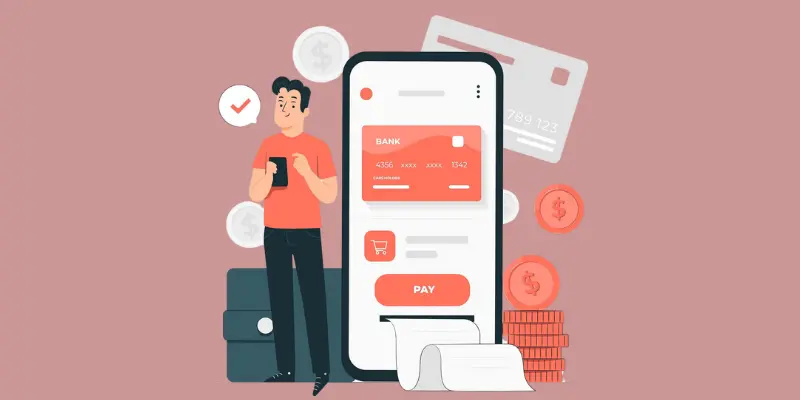
Creating mobile banking apps has many benefits, including improving customer satisfaction, operational efficiency, and safety. This section examines the best benefits of mobile banking app development.
Enhanced Customer Convenience
One of the significant advantages of mobile banking applications is their unbeatable accessibility. By using a mobile banking app, clients can complete many banking operations at the convenience of their home or while on the move.
These include checking balances on their checking accounts and transferring funds, paying bills, or even soliciting loans. Banking applications for mobile devices remove the requirement for clients to stop by physical banks to make their transactions, thereby saving time and effort.
Increased Accessibility
Apps for mobile banking have drastically made banking more accessible. Residents of remote areas where there is a lack of banking infrastructure and accessibility can now easily access banking services.
This makes access to banking services more accessible, which aids in encouraging financial inclusion and making it easier for more people to take part in the banking system. Furthermore, apps for mobile banking are multilingual and offer an easy-to-use interface that makes it simpler for a wide variety of clients to access banks.
Improved Security
Security is an essential concern within the banking industry, and mobile banking applications have made huge strides toward protecting customer information and transactions. The latest mobile banking applications employ sophisticated security features like biometric verification (fingerprint and facial Recognition), 2-factor Authentication (2FA), and complete encryption to secure sensitive data. These measures help stop unauthorized access and fraud and provide customers with security.
Cost Efficiency for Banks
Making and maintaining applications that allow mobile banking is cheaper for banks than operating branches in physical locations. Mobile banking can reduce the need for many employees and branches, resulting in considerable cost savings.
Furthermore, by automating various procedures for banking using mobile applications, banks are able to simplify their processes and cut administrative expenses. Cost savings are transferred to the clients in the form of reduced fees as well as better interest rates.
Enhanced Customer Engagement and Loyalty
Mobile banking apps provide a personalized experience to clients, which aids in building stronger bonds and increasing customer loyalty. Banks may use data analytics to analyze their customers' preferences and habits, allowing them to provide specific recommendations and services.
In-app notifications, push notifications, and other messages notify customers of special offers, new products, and other important information. By providing an accessible and personal banking experience, banks will increase satisfaction and retain customers.
Real-Time Transaction Monitoring
Apps for mobile banking allow users to track their transactions in real time. Instant access to transaction information and balances on accounts will enable clients to monitor the amount they spend and their financials more efficiently. In real time, transaction alerts may aid customers in identifying any unauthorized or unusual activity in their accounts immediately, allowing customers to act immediately to safeguard their money.
Easy Fund Transfers
Transferring money between accounts or with other people has never been simpler because of mobile banking apps. Users can instantly transfer funds into other accounts inside the same bank and into accounts at various banks using options such as NEFT, RTGS, or IMPS. UPI.
Mobile banking apps can also facilitate the transfer of money internationally, which makes it easy for users to transfer funds across international borders. Speed and convenience in transferring funds using mobile banking apps improve the overall banking experience for clients.
Comprehensive Financial Management Tools
Most mobile banking apps have financial tools to help users better manage their money. These include budget monitors, expense categorization tools, savings goal planners, and investment management tools. By providing consumers with information about their spending habits and financial health, these mobile banking applications allow customers to make better choices regarding their finances and reach their financial targets.
Seamless Integration with Other Financial Services
Mobile banking apps are easily integrated into various financial platforms and services, offering customers a complete overview of their financial system. For example, clients can connect the mobile banking app to their savings accounts and insurance policies.
The integration lets customers control their financial accounts in one app, making their financial management easier and increasing efficiency.
Enhanced Customer Support
Mobile banking applications offer various customer service options that improve customer experience. AI-powered chat support in-app bots and specially designed customer support portals can provide customers with fast support for banking inquiries or concerns. Support features like these make it less necessary for customers to go to branches or Customer Service Centers, saving their time while providing immediate solutions for their concerns.
Paperless Banking
Mobile banking applications promote paperless banking, which not only helps the environment but also reduces banks' administrative costs. Customers can get digital statements, transaction receipts, and other essential documents right through their mobile phones. Paperless banking can help reduce the need for physical paper, which reduces the possibility of document loss and improves the efficiency of record-keeping processes.
Customization and Personalization
Mobile banking apps provide extensive customization and personalization to meet users' specific needs. Customers can personalize their application interface, customize notifications and alerts, and pick from a wide range of banking options that match their needs. This degree of personalization increases customers' satisfaction and ensures that clients have a personalized experience with banking.
Streamlined Loan and Credit Applications
Applying for credit and loan products is now easier with mobile banking applications. Users can now apply for home loans, personal loans, credit cards, and other credit-related products via the app without completing lengthy documents or bank trips. The mobile banking app also provides quick loan approvals and disbursements, making the loan application process quicker and simpler.
Integration of Emerging Technologies
Mobile banking apps are at the forefront of integrating new technologies like artificial intelligence (AI), machine learning (ML), and blockchain. AI and ML algorithms can offer personalized financial guidance, identify fraud, and enhance the customer experience by using chatbots.
Blockchain technology could increase the security and clarity of transactions. Integration of this technology into mobile banking apps guarantees users access to the most up-to-date and advanced banking options.
Boosting Digital Payments
Mobile banking applications significantly contribute to the rapid growth of online payment. Mobile users can use their banking apps to pay utility bills, food items, or shopping services with just a few swipes. The ease and speed of electronic payments have been a major factor in the decline in the need for money, which is a step towards the cashless economy.
Mobile banking apps allow QR codes for payments or contactless and NFC-based transactions. These are further improving the convenience of online payments.
Enhanced Financial Literacy
Banking apps for mobile devices can improve financial literacy among clients. Many apps provide educational information, financial advice, and interactive tools that aid consumers in understanding the various financial concepts and products. In providing users with the resources and knowledge required to make educated choices regarding their finances, Banking apps for mobile devices empower customers to manage their financial destiny.
Competitive Advantage for Banks
Banks that offer a modern mobile banking application can give them a competitive edge. In today's very competitive banking market, it is essential to have a user-friendly, feature-rich mobile banking app that will attract new clients and keep existing customers. Banks that invest in mobile banking application improvement can stand out from competitors and make themselves known as experts in the field of online banking.
Reduced Operational Load
Mobile banking applications can lessen the burden on bank branches and Customer Service Centers. By allowing customers to complete various banking transactions in their own time, mobile banking applications make conducting personal visits to the branch and calls to customer service less necessary. This decrease in the operational burden lets banks allocate their resources better and concentrate on providing superior customer service.
Real-Time Analytics and Insights
Banking apps for mobile devices give banks instant analyses and information about customer behaviors and transactions. Through the analysis of this data, banks can identify patterns and detect anomalies. They can also adopt data-driven decision-making to improve their offerings.
Real-time analytics allow banks to quickly respond to changing customer requirements and market trends, which ensures that they are responsive and in the market.
Eco-Friendly Banking Solution
Moving to mobile banking is good for the environment and promotes sustainable banking techniques. By reducing dependence on paper-based documents and reducing branches' physical visits, mobile banking applications help reduce carbon footprint.
Banking institutions can use mobile banking apps to advertise environmentally friendly initiatives such as eco-friendly statements and paperless products. This further increases their responsibility to the environment.
Factors Affecting the Costs of Mobile Banking App Development
The cost of developing mobile apps can be wildly different depending on various aspects. Being aware of these variables will aid you in budgeting more efficiently and making informed decisions during development.
Complexity of Features
One of the major elements determining the price of developing mobile banking apps is the level of complexity and range of the features you would like to add. Basic features like check balances, transaction logs, and fund transfers are less expensive than sophisticated features such as biometric Authentication, AI-powered financial guidance, and integration with third-party services.
-
Essential Features: The simplest features can usually be less costly to implement. They include registration for users and login, balance inquiry, and transaction history.
-
Advanced features: Features like immediate alerts, custom financial insight, and integration with other platforms (like payment gateways or other financial service providers) can increase the banking app development cost. Adding advanced security options, like multi-factor authentication or fraud detection, can also increase the costs.
Platform and Technology
The selection of platforms (iOS, Android, or both) and technology stack affects the total cost of development. The development process for multiple platforms typically requires more time, resources, and expertise, increasing costs.
-
Native Development: Making separate applications for iOS and Android with native technology (Swift to iOS along with Kotlin to Android) provides the best efficiency and user experience but costs more because separate developer codebases and codebases are necessary.
-
Cross-Platform Development: Utilizing frameworks like Flutter and React Native allows one codebase to run across both platforms. This is more affordable but could be restricted when accessing native functions or getting the same speed as native applications.
Design and User Experience (UX)
Design and user experience are crucial to the effectiveness of a mobile banking application. A good app's design will increase the user's satisfaction and involvement. However, it is necessary to invest in high-end design.
-
Custom Design: Custom user interface (UI) and user experience (UX) design specifically designed to fit the requirements of your application can cost a lot. This can include creating intuitive navigation and appealing visuals and ensuring your app is available to everyone.
-
Template-Based Design: Utilizing pre-designed design templates or UI kits could lower costs, but they may not serve the same personalization and distinctiveness as a design made to order.
Security and Compliance
The security of mobile banking applications is important because of the delicate character of financial and private information and actions. Ensuring that the app complies with the industry's standards and regulations can increase the cost of development.
-
Security Features: Security measures that are robust and secure, such as secure encryption, secure authentication, and periodic security audits, could cost a lot, but they are essential for protecting user data and maintaining confidence.
-
Legal Compliance: Compliance with financial regulations and standards, including GDPR or PCI-DSS, requires extra work in the development process and, possibly, legal advice. Ensuring the application complies with these standards could increase the development process and cost.
Integration into Existing Systems
If the mobile banking application requires integration with other banking platforms or services from third parties (like payment gateways or relationship management platforms), this can increase costs and complexity.
-
APIs and SDKs: Connecting to third-party APIs and SDKs requires more development and testing. Prices can vary based on the difficulty of integration and accessibility of well-documented APIs.
-
Legacy Systems: If the application needs to be connected to older banking systems, more tests and development might be needed to ensure compatibility and smooth operation.
Development Team Location
The place of your team's development is a major factor in your pay. Prices vary greatly based on the location of mobile banking application development company location, experience, and knowledge.
-
Onshore Development: Hiring developers from the country you reside in (onshore) is typically more expensive, but it can also facilitate better collaboration and project management.
-
Offshore Development outsourcing to countries with lower labor costs could lower costs; however, it could pose challenges due to time zone variations, communication, and quality control.
Project Management and Testing
A well-planned project and rigorous testing are essential to delivering the best mobile banking experience. The cost related to these processes depends upon the scope and difficulty of the undertaking.
-
Project Management: A well-organized project management process ensures that development is on the right track on time, stays within budget, and is on time. The costs could include project directors' salaries and administrative department employees.
-
Testing and Assurance: Rigorous testing is required to guarantee the app's efficiency, speed, and security. This includes functional tests, user acceptance tests, and stress tests, which could all increase development expenses.
Maintenance and Updates
Maintenance and updates after the launch continue to be a cost that needs to be accounted for in your budget. Regular updates are necessary to eliminate bugs, enhance the functionality of your product, and keep pace with changing technologies and security requirements.
-
Bug Fixes and Updates: Regular investment will be required in updating the software to fix bugs, improve capabilities, and ensure compatibility with the latest devices and operating systems.
-
Service and Support: Support for users and keeping the application running as time passes are extra charges that should be included in the total budget..
Conclusion
Mobile banking app development in 2024 is at the cutting edge of technological advancements in finance, providing unprecedented convenience in security, functionality, and safety to customers worldwide. While financial institutions continue to adopt digital transformation, the value of having a user-friendly, robust mobile banking application cannot be overemphasized.
The apps don’t just simplify the process of managing finances and transactions, but they also increase customer engagement and customer satisfaction.
Developing a profitable mobile banking application demands a deep comprehension of customer needs, regulatory guidelines, and recent technological advances. From ensuring top-quality security to using the latest AI-powered customer service, each detail must be developed and carried out.
Mobile banking’s future applications constantly evolve and adapt to new technologies like blockchain, biometric authentication, and customized financial services. To provide the best user experience possible using cutting-edge technologies while ensuring the highest security standards, developers can create mobile banking services that do not simply meet but exceed the customer’s expectations.





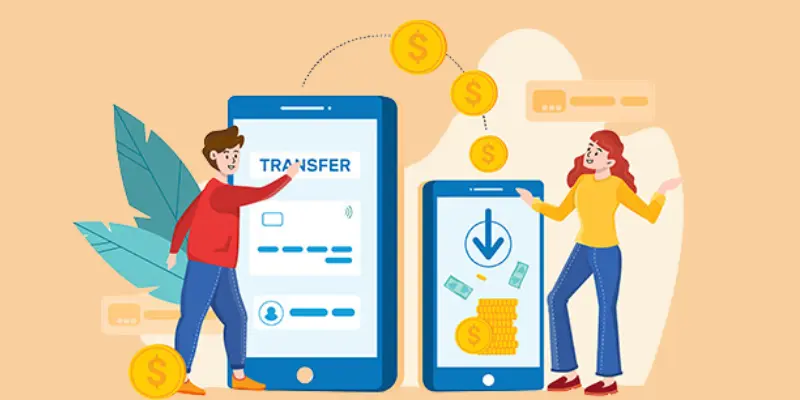


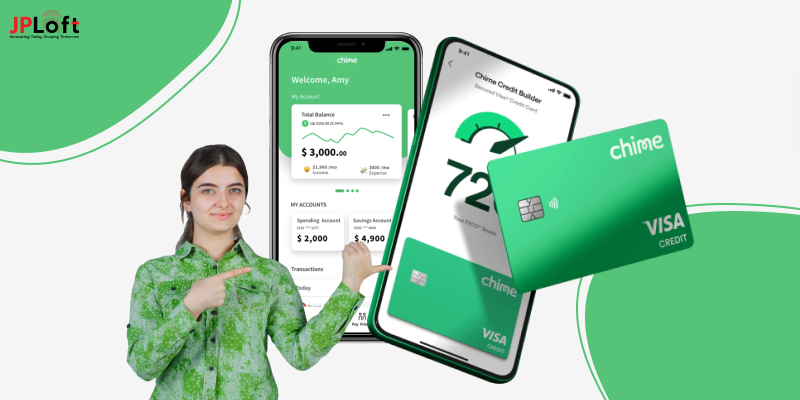
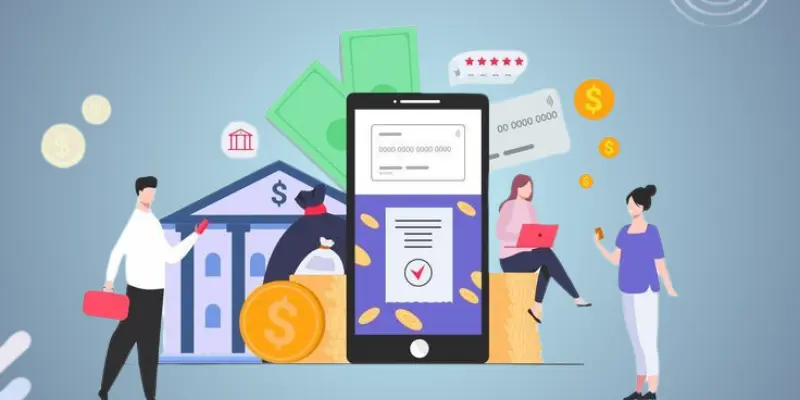
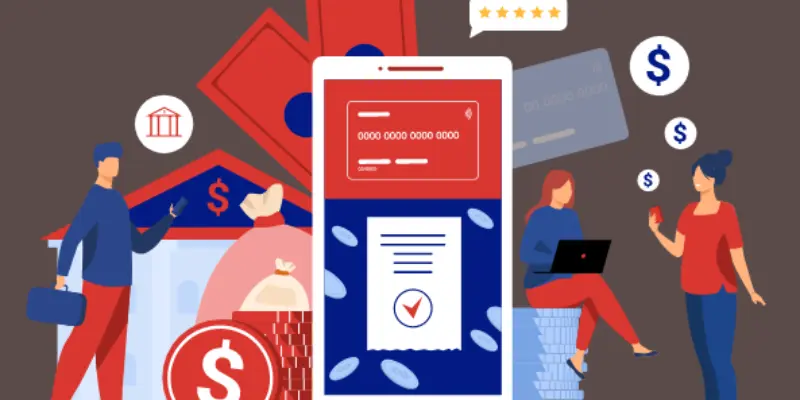



Share this blog